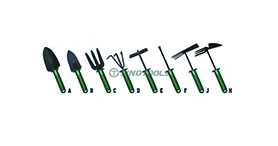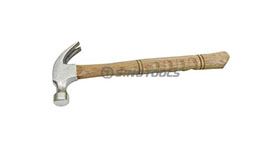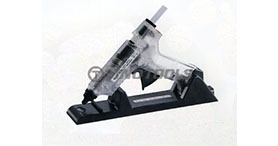China Garden Tools Factory analyzes this article for you.
1. Basic overview of garden tools-chain saw industry
01
Basic meaning
Garden tools refer to machinery and equipment involved in gardening, greening, and subsequent maintenance. Including lawn planting and maintenance machinery, greenfield planting and maintenance machinery, urban tree and shrub planting and maintenance machinery, flower cultivation facilities and equipment, garden engineering, and professional sports venues.
Garden machinery refers to chain saws, edge cutters, trimmers, hedge trimmers, brush cutters, lawnmowers, twigs, leaf suction machines, lawnmowers, lawn trimmers, etc. for landscaping, garden construction, gardens Maintenance of mechanical equipment.
Chain saw products are mainly electric chain saws and gasoline saws, which are composed of handles, motors or gasoline engines, guide plates, chains, handguards, etc., and are powered by the operator's hands to cut trees with a saw chain. Used for logging and timber production. Its working principle is to perform the cutting action by lateral movement of the staggered L-shaped blades on the saw chain.
02
The main classification and advantages and disadvantages of chain saws
Chain saws are classified according to different sources: gasoline saws, electric saws, pneumatic saws, and hydraulic saws. The advantages and disadvantages of these four power chain saws are obvious:
Gasoline saw: strong mobility, suitable for mobile work in the field. But it is noisy, troublesome to maintain, and generates more heat.
Electric chain saw: stable power, quick start, heavier than other saws. But if the line is too long, it will be inconvenient to move.
Pneumatic chain saw: safe and pollution-free, low noise, lightweight. However, an air compressor must be attached, which increases the floor area and is restricted by conditions.
Hydraulic chain saw: full power, but slow start, stable work. The hydraulic pump station has a smaller volume than an air compressor. higher cost.

China Garden Tools
2. Development and market overview of garden tools industry
The emergence and development of China Garden Toolsstarted from lawn maintenance machinery. At first, people used simple tools and livestock to "cut" the lawn to mow and maintain the lawn. It wasn't until 1830 that the world's first forage harvester powered by an internal combustion engine was invented, and it was used for lawn mowing in 1832. Since then, equipment for greening and maintenance of garden projects for different purposes has been continuously developed. In the 1950s, a large number of machinery and equipment used for landscaping and maintenance operations came out, and the garden tool industry entered a period of rapid development; in the 1970s, in some developed countries in Europe and America, as people’s living standards improved, small-scale landscaping And maintenance machinery entered the family and became a necessary machine for the family; at the end of the 20th century, the construction and maintenance of public green spaces to courtyard green spaces in most cities around the world had basically achieved mechanization.
3. The development of Chinese garden tools and equipment began in the late 1970s, when the urban construction department set up a garden tool factory to produce garden tools. In the 1980s, with the increase in landscaping areas in major and medium-sized cities across the country, some agricultural and forestry machinery manufacturers began to develop and produce some urgently needed garden tools.


